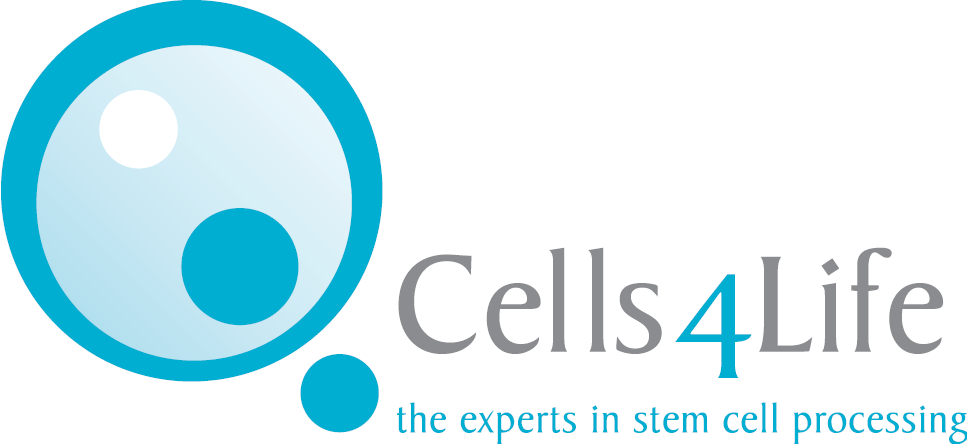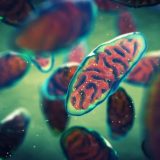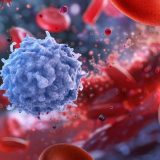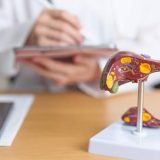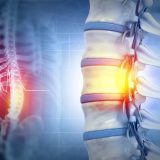Stem Cell Blog
Употребата на матичните клетки од папочна врвца рапидно се зголемува. Пред 10 години крвта од папочна врвца можеше да лекува околу 40 состојби, но денес таа бројка е над 80. Со нетрпение очекуваме нови терапии за болести и нарушувања како што се дијабет, аутизам и мозочен удар, можете да бидете во тек со најновите случувања во регенеративната медицина на нашиот блог за матични клетки.
07/07/2024 BlogStem Cell NewsStem Cell Therapies
In a study first published in April’s edition of Advanced Functional Materials, researchers found that stem cells boost natural repair following cardiac arrest.
The most common consequence of cardiac arrest is brain injury. Decreased blood flow and oxygen to the brain can result in damage to specific areas such as the temporal lobe, which is responsible for memories. [1]
According to the British Heart Foundation, there are around 30,000 out of hospital cardiac arrests in the UK per year, with survival rates of only 1 in 10.
While there are currently steps towards improving these survival rates – mainly public awareness and educational campaigns focused on immediate response [2] – better survival rates potentially means more patients suffering from brain injury, which can range in severity.
What researchers at the University of Maryland School of Medicine in the U.S. have found is that neural stem cells can help with repairing post-cardiac arrest brain damage when their carbohydrate structure is manipulated. [3]
In an animal study using rats, scientists applied sugar molecules to the neural stem cells in a process called glycoengineering.
It’s thought that the application of these sugar molecules provide the neural stem cells with a better chance of retention and integration within the harsh microenvironment of the brain.
Researchers examined the efficacy of the ‘sugar-coated’ neural stem cells that had been pretreated with TProp (the name of the modified sugar molecule applied) with naive human neural stem cells.
They found through subsequent testing that the stem cells that had been pretreated with TProp improved brain function substantially, along with reducing anxiety and depression-related behaviours.
The ability for synapses to modify the strength of their connections (otherwise known as synapse plasticity) also improved, with the TProp group also demonstrating a reduction in neuroinflammation in the central nervous system.
Overall, the findings from the University of Maryland are promising as they indicate that these glycoengineered stem cells could help regenerate connections between synapses in the brain that have been affected by cardiac arrest related injury in humans.
The next steps will involve tests on larger animals before hopefully moving to a clinical study.
If you want to know more about how you can save your baby’s powerful stem cells, fill out the form below for your free welcome pack.
References
Researchers at Vienna University of Technology have taken an important step in making lab-grown cartilage a possibility by utilising a new technique involving 3D printing and stem cells. [1]
The process involves a high-resolution 3D printing process to create small, football-shaped spheres that act like porous scaffolds within which differentiated cartilage stem cells can sit.
These spheroid scaffolds can then be molded into various shapes in order to fit like puzzle pieces into seamless tissue structures.
One of the main challenges in attempting to form artificial cartilage using stem cells thus far has been the inability for scientists to leverage much control over the shape of the resulting tissue.
The key advantage of the 3D printed spheroid, cage-like structures, which are around a third of a millimetre in diameter, is that they’ve enabled the researchers in Austria to form combinable, compact building blocks from which to grow cartilage tissue.
Importantly, the team at TU Wien also showed that when combined, neighbouring spheroids actually grow together, with the cells from one spheroid migrating to another, connecting in a closed, continuous structure. [2]
The 3D printed plastic scaffolds provide mechanical stability to the tissue as it continues to grow, up until the point at which they are no longer needed. The spheroids then degrade, leaving behind cartilage tissue shaped in the way desired.
A huge breakthrough for facilitating the regenerative potential promised by stem cells – particularly mesenchymal stem cells, which have the ability to differentiate into a range of specialised cells [3] – this new technique could be used in growing other tissues beyond cartilage into shapes required for repair at the cellular level.
For the time being, however, the researchers’ next aim is to attempt to use their 3D printed spheroids in the formation of tailormade pieces of cartilage tissue that can then be inserted into damaged areas of the body following injury.
If you’re interested in learning more about how saving stem cells for your baby could give them access to future regenerative treatments, download our free welcome pack below.
References
A recent study published in the journal eBioMedicine found that umbilical cord stem cells may have the potential to heal the intestinal ulcers of patients suffering from Crohn’s disease.
What is Crohn’s disease?
Crohn’s disease is a condition that causes parts of the digestive system to become inflamed. The disease affects around 1 in every 300 people in the UK, with symptoms including severe abdominal pain, diarrhoea, tiredness and fatigue, appetite loss and in some cases, anaemia. [1] [2]
A lifelong condition, the root causes of Crohn’s aren’t yet known, but it’s thought that there are several key factors that may contribute to the likelihood of developing the disease, such as:
-
Having had a particularly pernicious stomach bug
-
Whether any close relatives have Crohn’s (genes)
-
If there’s a preexisting immunological problem
-
If there’s an imbalance in gut bacteria levels
-
Exposure to a range of environmental factors, including stress, smoking, taking certain medicines such as antibiotics and non-steroidal anti-Inflammatory drugs (NSAIDs).
Unfortunately, there are no cures available for Crohn’s disease, with treatments limited to reducing the inflammation and severity of symptoms through medicinal, although this only has an efficacy rate of 40-60%, or surgical means which involves removing a portion of the digestive system. [3]
With this in mind, the need to find a new approach to the treatment of Crohn’s has a pressing urgency.
Exploring the application of umbilical cord stem cells for treating Crohn’s disease
Researchers conducted a pilot, open label clinical study between November 2020 to October 2023, with 17 patients with Crohn’s disease.
The patients, who were aged between 18 to 75, were selected on the basis that they had moderate to severe Crohn’s disease for at least three months prior to the start of the trial and that they had not responded to advanced treatment.
Patients received an injection of human umbilical cord mesenchymal stem cells (hUC-MSCs) both by colonoscopy and then by intravenous drip the following day. Patients were then monitored over the course of 24 weeks, with researchers measuring laboratory and clinical markers along with performing endoscopic assessments.
The researchers found that of the 17 patients, eight showed improvement in their SES-CD (Simple Endoscopic Score for Crohn’s disease) scores, which measures the size and severity of ulcers wherein a higher score indicates a more severe disease, while 3 further patients also displayed mucosal healing, meaning their SES-CD scores became zero.
All patients achieved clinical remission by week 24 of the trial. [4]
How does the treatment work?
During the course of the trial, the researchers were paying special attention to how the mesenchymal stem cells were working to provide such dramatic improvements in patient outcomes. In addition to showing the viability of the stem cell treatment, they also wanted to show how that treatment worked.
They did this by taking a biopsy of the mucosae at the margins of the intestinal lesions from 3 patients before and after the trial for transcriptome sequencing, a process that would allow them to access information about the gene regulation and protein content of cells.
The researchers’ analysis revealed that the hUC-MSCs appeared to upregulate the expression of genes that maintain the integrity of the intestinal epithelial barrier – a mucus layer that regulates luminal contents (such as enzymes, food particles, bile and bacteria) and its interaction with the body’s immune system – and downregulated the expression of genes relating to inflammatory response. [5]
Essentially, what this suggests is that the application of stem cells led to the inhibition of the inflammatory response and an improvement in the integrity of the intestinal barrier, remedying two key aspects of intestinal function affected by Crohn’s disease.
While there were limitations in the size and scope of this trial, what it showed was significant and promising potential for the effective application of umbilical cord stem cells in treating Crohn’s disease, a huge step forward in making available a new avenue of treatment for those who live with the condition.
If you want to find out more about how you could give your baby access to their own umbilical cord and placental stem cells, sign up below for a free welcome pack.
References
02/05/2024 BlogStem Cell TherapiesUses for Placenta
The formation of the placenta represents a pivotal moment in pregnancy. Often thought of as the life support system for the growing foetus, the placenta represents the beginning of the nurturing bond between mother and child.
An intricate organ, the placenta undergoes a process of development that is at once fast and yet also remarkable, and is essential to the growth and health of your new baby.
In this blog, we’ll answer some of the most important questions about the placenta, like ‘what is the placenta?’, ‘when does the placenta form?’, and ‘what does the placenta do?’. We’ll also cover how the placenta could hold the key for unlocking the future of medicine.
What is the placenta?
The placenta is a temporary organ that is a bit like a pancake in shape and comes to measure around 20 cm in diameter and is on average 3 cm thick at the point of delivery. [1] It forms in the womb, also known as the uterus, during the first few weeks of pregnancy and attaches to the uterine wall where it is connected to your baby via the umbilical cord.
When does the placenta form?
The formation of the placenta usually begins at around week four of pregnancy.
Approximately a week after a sperm fertilises an egg about 120 cells called the blastocyst implant themselves into the wall of the womb. Around two thirds of these cells split away and implant themselves deeper into the uterine wall where, instead of preparing to develop into the arms, legs and other body parts of your baby, they will prepare to form into the placenta. [2]
From there the placenta will continue to develop over the next two months, taking over the role of the corpus luteum – a collection of cells that produce progesterone, a hormone necessary for sustaining the foetus during the early stages of pregnancy – at around weeks 10-12. [3]
The placenta will then be solely responsible for sustaining your baby into the second and third trimesters.
What does the placenta do?
The placenta has a myriad range of functions that help to sustain and protect your baby while it grows in the womb. [4]
These include:
- Providing your baby with oxygen while also removing carbon dioxide.
- Transferring vital nutrients such as water, amino acids, vitamins and glucose from mum to baby.
- Carrying away waste substances from the baby, like urea, uric acid and bilirubin (a substance made during the breakdown of red blood cells).
- Ensuring that the transfer of nutrients and waste occurs without mixing the blood of the baby with that of the mum’s.
- Passing antibodies to the baby close to delivery which provide it with immunity both in the womb and during the first few months of its life, effectively kickstarting its immune response.
- As well as being an organ, the placenta is also an endocrine gland, meaning it produces powerful hormones and signalling molecules such as lactogen, progesterone, oestrogen, oxytocin and relaxin which are vital for both mum and baby during pregnancy.
What can I do with my placenta after my baby is born?
Even after baby is born, the placenta still has a range of uses and applications.
Placentophagy
Among the most popular of these are forms of placentophagy, otherwise known as the consumption of the placenta. This can be done in a few ways, either through steaming or cooking, but it can also be dehydrated and encapsulated into pills that mothers can take in the first few weeks after birth.
So far, the benefits of placentophagy are only supported by anecdotal evidence, most of which points to potential improvements in energy levels, milk supply, and mood along with reductions in the likelihood of insomnia, bleeding and postpartum pain. However, it’s worth noting that there are safety concerns around the susceptibility of the placenta to infection.
If you’re planning on eating your placenta then it’s worth discussing the process with your GP or dedicated health professional, along with alerting your hospital that it’s something you want to include in your birth plan. [5]
Placenta banking
It’s been widely noted that the placenta and amnion are both rich sources of various kinds of stem cells. These are cells that have the ability to differentiate into a range of specialised cells throughout the body, and are currently undergoing research in numerous clinical trials for the application in treating a wide range of degenerative diseases. [6] [7]
Here at Cells4Life, we offer expectant parents the chance to store these powerful cells from both the amniotic membrane and chorionic villi of the placenta so that they’re in reserve should your baby ever need them in a future regenerative therapy.
If you’re interested in learning more about storing stem cells for your baby, fill out the form below to download our free welcome pack, which contains comprehensive information about our safe and simple services. It could be something that makes all the difference.
References
A man who was left paralysed by a severe spinal cord injury has reported that he is now able to stand and walk by himself thanks to a pioneering new stem cell treatment.
Chris Barr, 57, was left unable to feed, dress or walk by himself as a result of a traumatic surfing accident seven years ago, where he fell from the crest of a wave. Doctors told him at the time that the accident could leave him permanently paralysed. [1]
However, this month it’s been reported that Barr has started to not only regain basic mobility, but also the ability to stand and walk again after undergoing an experimental stem cell treatment.
As a participant along with 10 other patients in a clinical trial run by the Mayo Clinic, Barr underwent a procedure being hailed by many as the future of spinal cord injury treatment. [2]
The process involves extracting stem cell rich fat from the stomach through a biopsy, the isolation of the powerful mesenchymal stem cells from this fat tissue, their expansion into 100 million cells and their injection into the lumbar spine in the lower back. [3]
Because mesenchymal stem cells have the unique ability to transform into other cell types, they can be used to repair and replace cells that have become damaged through injury, such as those in Mr Barr’s spinal cord.
The success of the experimental treatment was measured against the American Spinal Injury Association (ASIA) Impairment Scale, which is used as a reference for determining the severity levels of paralysis.
As a result of the trial, 70% of the participants moved up at least one level on the ASIA scale, while 30% reported no improvement or worsening in their conditions and no serious adverse effects were reported by all participants.
It’s estimated that around 50,000 people live with spinal cord injury in the UK, with 2,500 individuals sustaining spinal cord injuries every year. [4] [5]
More research is needed into the effectiveness of this form of treatment – stem cell therapies are still classed as ‘experimental’ in the U.S. – but what’s undeniable is that stem cells have managed to give Chris Barr his life and freedom back.
To find out more about what stem cells can do and how you can save them for your baby, download our free welcome pack below.
References
A new study published in the journal Burns & Trauma has found that the application of stem cells promotes the repair of diabetic wounds. [1]
Affecting nearly 1 in 10 adults worldwide, diabetes is quickly becoming one of the most prevalent and widespread causes of global public health concern. [2]
Along with causing high blood sugar levels, diabetes can lead to comorbidities that can drastically affect and complicate diabetes sufferers’ quality of life and health.
Chronic wounds, such as diabetic foot ulcers, are the leading cause of such complications, which can result in disability and even, in some cases, mortality.
Diabetic wounds heal more slowly because normal cellular processes are interrupted by high glucose levels.
One important cellular process that high glucose particularly affects is autophagy, the process by which damaged cells are broken down by the body and recycled towards other areas of cellular repair. Autophagy plays a pivotal role in the healing process. [3]
What the team at Shengjing Hospital of China Medical University found was that the application of exosomes from adipose-derived mesenchymal stem cells significantly improved the healing process of wounds in diabetic mice.
They observed the exosomes upregulating the autophagy flux, meaning increased epidermal cell proliferation and migration, promoting healing.
These findings are highly promising, suggesting that mesenchymal stem cell derived exosomes have the potential to reduce the risks posed by diabetic wounds and speed up the recovery process for those who suffer from them.
Currently 50%-70% of all amputations are for diabetic foot ulcers. Depending on further findings, the use of stem cells in the treatment of diabetic wounds like foot ulcers may even mean an end for drastic last resort measures, such as amputation. [4]
If you want to know more about the potential of stem cells and about how to privately store the mesenchymal stem cells from your baby’s umbilical cord and placenta, download our FREE Welcome Pack below.
References
There’s exciting news from the University of Galway, where researchers are developing a new technique that they hope will improve the viability of stem cell treatments for Parkinson’s disease.
The pioneering method, which involves the use of a substance called hydrogel, could revolutionise the way stem cell treatments for Parkinson’s disease are carried out, making them more effective and less prone to failure.
Parkinson’s disease is a neurological condition affecting around 150,000 people in the UK. [1]
The condition, which is caused by a lack of dopamine in the brain, manifests in severe ways with symptoms including tremors, muscle rigidity and slowness of movement. [2]
Unfortunately, Parkinson’s is degenerative, meaning that it gets worse over time. It can make people who live with the condition more vulnerable to poor health and disability, which can end up having fatal repercussions in some cases.
The degeneration of nerve cells in the brain is what results in the underproduction of dopamine. The aim of recent stem cell research has been to find a way of repairing and replacing these cells through the use of induced stem cells.
These induced stem cells are harvested from different areas of the body, such as skin, and then reprogrammed to become the type of cells necessary for brain repair.
However, these cells require transplantation at a very early stage of their development into brain cells and once transplanted, many of them do not end up converting.
What researchers at the University of Galway have discovered is that by transplanting these induced stem cells in a collagen hydrogel, effectively a water-based scaffold, significantly improves the chances of the stem cells both surviving and then differentiating into the cells necessary for therapy. [3]
With funding from the Michael J. Fox Foundation for Parkinson’s Research (MJFF), the study’s findings were published in the Journal of Neural Engineering and have been met with widespread acclaim.
The research is ongoing, but the team at the University of Galway and MJFF hope that this new transplantation technique will significantly improve outcomes for sufferers of Parkinson’s disease.
If you want to learn more about how you could give your baby access to future stem cell therapies, download our FREE Welcome Pack below.
References
02/04/2024 BlogStem Cell NewsStem Cell Therapies
